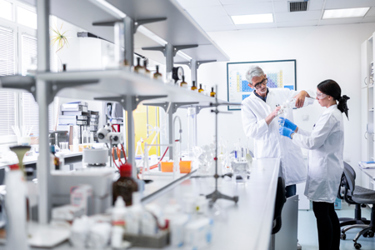Upstream Optimization Paved A Straightforward Path For High Percentage Of Full Capsids In AAV6
By James Fasano, Azam Hassaninasab, Daniel Kennedy, Theresa Dao, Jay Cai, Omar Matalka, Christine Beaudry, Miranda Williams, Lorenz Ponce, Arianna Spooner, Emily Sinclair, Bojiao Yin, and Mercedes Segura

Adeno-Associated viruses (AAV) are a potent tool in the expanding field of cell and gene therapy as they offer low immunogenicity and can facilitate gene transfer or gene editing for in vivo or in vitro applications via the efficient delivery of genetic material. However, the AAV potency and safety are highly dependent on the genome packaging efficiency, including full particle percentage among the total particles, the distribution of partial particles, and the amount of empty particles. Because clinical applications for AAV are increasing rapidly, there is a high demand for further increasing yields as well as product quality, particularly for a higher percentage of full capsids in the final product.
A platform process for AAV6 production has been well-established, using a GOI with a size of ~4.7kb, and is based on transient transfection of serum-free cells grown in suspension. In this process, we have evaluated multiple parameters in the upstream production process (for example, cell growth, transfection reagents, DNA concentration, etc) to reach titers > 1e11 vg/mL and >15% full particles based on dynamic light scattering (DLS) using Design of Experiment (DoE) studies in shake flasks. Furthermore, our data demonstrated good scalability from shake flask to a 2L stirred tank reactor (STR) in terms of genome titer and full%. The challenge for the baseline process was that final AAV could only reach ~50% full particles even after ION Exchange (IEX) enrichment. To avoid changes in the downstream process and accelerate the development timeline for this project, a follow-up DoE was performed to optimize the ratio among 3 transfection plasmids to increase AAV full percentage. Batch purification was used to determine upstream processes with higher percent full particle via DLS, and the top conditions achieved >1.5e11vg/mL and 17-23% full (DLS). Then, the top 2 processes were scaled up into 2L STR and particles were purified through our platform affinity chromatography using AKTA for further verification. The data showed the affinity purified AAVs from both processes were > 1e13 vg/mL and ~ 20-30% full (via Analytical Ultracentrifugation [AUC]). Since the GMP friendly downstream process usually include IEX chromatography after the affinity column to enrich the full particles, these two upstream processes have been also applied through IEX separation and our data demonstrated the top condition was able enrich particles to >70% full.
Get unlimited access to:
Enter your credentials below to log in. Not yet a member of Bioprocess Online? Subscribe today.
